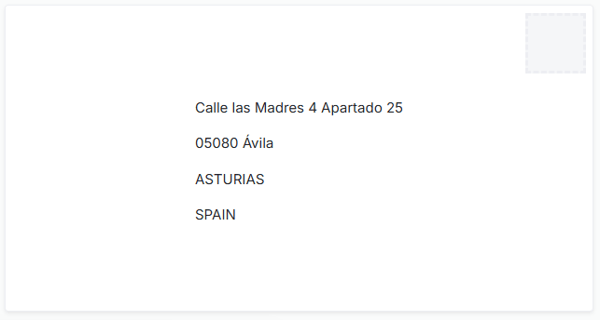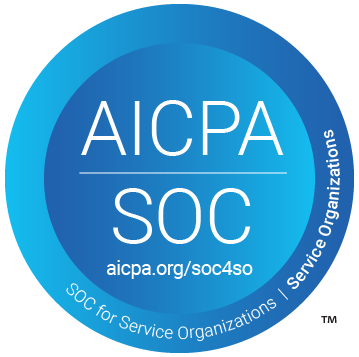This guide provides a comprehensive overview of Spanish address formatting, postal code structures, and localization practices. It includes information on postal services, languages, time zones, and address validation standards across Spain.
Address Format
Structure for standardized Spanish postal addresses.
- Organization
- Building
- Thoroughfare PremisesNumber SubBuilding SubPremisesLevel SubPremises
- PostBoxType PostBoxNumber
- PostalCode Locality
- AdministrativeArea
- Country
Address Verification Data
Spanish postal addresses verification data.
| Available: | Yes |
| Does the country use Postal Codes: | Yes |
| PO Box Indicator: | Apartado, apartat, Apartado de Correos, Posta Kutxatila, Lista de Correos |
| ISO-2-Code: | ES |
| ISO-3-Code: | ESP |
| Phonecode: | 34 |
Address Example
Example of standardized Spanish postal addresses.

Country Info
Full Country Name: Kingdom of Spain (Reino de España)
| Country Alpha-2 code | ES |
|---|---|
| Country Alpha-3 code | ESP |
| Numeric Code | 724 |
Timezone
Spain Time Zone Details
| Time Zone | UTC | DST |
|---|---|---|
| Central European Time (CET): | UTC+1 | UTC+2 |
| The Canary Islands observe Western European Time (WET): | UTC+0 | UTC+1 |
Official Language
Spain’s official national language is Spanish (Castilian). Several autonomous communities also recognize co-official languages, including Catalan, Basque, Galician, and Aranese.
Fun Fact
- Life expectancy at birth is around 84 years. (Potsdam Institute)
- Spain is almost five times the size of Kentucky and slightly more than twice the size of Oregon. (CIA)
- It ranks around #32 in population among countries globally. (CIA)
- Spain has varied terrain: mountain ranges (the Pyrenees, Sierra Nevada), plateaus (Meseta Central), and an extensive coastline. (CIA)
- Net migration (people moving in) is significant enough to affect demographics. (CIA)
- Major reliance on the services sector since tourism is a big component of the economy. (CIA)
- Spain has many “major urban areas” with high densities but the country also has large rural, or less populated, mountainous regions. (CIA)
- Natural hazards include periodic droughts, occasional flooding, and active volcanism in the Canary Islands. (NAVSEA)
Postal Authority
The Sociedad Estatal Correos y Telégrafos, S.A. (Correos) is Spain’s national postal service. It is a state-owned company providing mail, parcel delivery, logistics, and digital services. Correos operates one of the largest logistics networks in Spain, with thousands of post offices and extensive rural coverage, ensuring universal postal service throughout the country.
Reference: https://www.correos.es
Postal Code Format
Spain uses a five-digit postal code system written immediately before the locality name. The first two digits identify the province, such as 28 for Madrid or 08 for Barcelona, while the remaining three digits designate the specific delivery zone or post office within that province.
Example:
28046 MadridName Conventions
Population Names
In Spain, names follow the Western naming convention and reflect the country's civil naming laws. The typical format is:
[opt: title] [given name] [opt: middle name(s)] [FATHER'S SURNAME] [MOTHER'S SURNAME] [opt, rare: title]
Examples:
- Sr. Carlos García López
- Doña María Fernández Martín
- Dr. Javier Torres Ramírez
- Carmen y Lucía Pérez Gutiérrez
Spain uses a two-surname system: children inherit the first surname from each parent, typically the father's first surname followed by the mother's first surname. Since 2017, parents may choose the order of the surnames, but in practice the traditional order is still widely used.
Accents and special characters (e.g., á, ñ, é) are common and legally recognized. Titles such as Sr. (Señor), Sra. (Señora), Doña, Dr./Dra. (Doctor), and Prof./Profa. (Professor) are used in formal or professional settings.
Organizational Names:
Spanish business entities must include a legal structure designation and register with the Registro Mercantil. Common legal suffixes include:
- S.L. (Sociedad Limitada – limited liability company)
- S.A. (Sociedad Anónima – public limited company)
- S.Coop. (Sociedad Cooperativa – cooperative)
The business name must reflect the entity type and be distinguishable from existing names on file.










